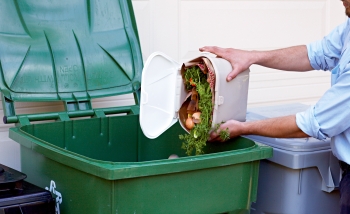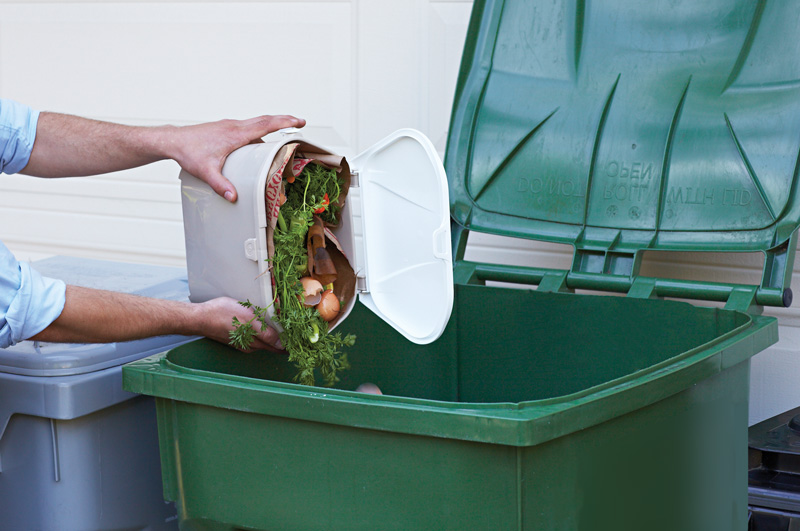Food Scrap Composting

Did you know that properly sorting food scraps and food-soiled paper into your green bin helps fight climate change? It's also now the law.
All Alameda County jurisdictions offer curbside food scrap composting services to residents of single-family homes. Compost service is available to apartments and condos as well. Find out more about:
- Each city's curbside recycling and composting programs
- State and local organics and recycling law
- Backyard composting
- Food waste prevention tips and resources
Why we collect and compost food scraps
- Food scraps and food-soiled paper are the largest single item in our waste stream and make up about 1/3 of what we throw away.
- Food scraps and yard trimmings collected from curbside bins are sent to a composting facility where they are turned into compost.
- Compost is a valuable resource used by landscapers, farmers, and gardeners to grow food in California. Quality compost is vital to a healthy food supply, and improves soil quality, water retention, increases crop yield, and reduces the need for fertilizers and pesticides.
- Food scrap composting reduces green house gases. Food scraps emit more methane than any other material in the landfill, and methane is 23 times more potent a GHG than carbon dioxide (CO2).
What items can be composted in the green bin?
- All food products: fruit, vegetables, breads, cereal, dairy, meat (including bones); coffee grounds, filters and tea bags.
- Uncoated food-soiled paper: paper towels, plates, napkins, pizza boxes and paper lunch bags.
- Plant waste and untreated wood
What items are not allowed in the green bin?
- Plastic, glass, metal, liquids, and pet waste should never go in the green bin. When these items are put in the green bin, they contaminate the compost that we use to grow our food.
See flyer (PDF) that explains how food scraps are turned into compost.
Compost Tips

Keep compost clean
- Remove stickers, twist ties, and rubber bands from produce.
- Plastic, glass, and metal should never go in the green bin.

Collect your food scraps
- Use a paper bag, newspaper liner, or kitchen pail to collect food scraps.
- Keep a small bowl handy for food prep trimmings and for scraping your plate.
- Refer to our Re:Source guide when you're unsure of what goes in your kitchen compost pail. Select your city in the drop-down menu.

Store your food scraps in a convenient place
- On the counter
- Under the sink
- In the fridge or freezer – especially for meat and fish or during hot weather.

Put your food scraps in the green cart for weekly pick-up
- Toss your compostable or paper bag of food scraps in the green cart.
- Empty food scraps from your collection pail or bowl into the green cart.
- Line the bottom of green cart with newspaper or leaves to keep it clean.

Be a helpful host
- You can remind guests and family to be a good sorters. Create visual aids with our Sign Maker tool.